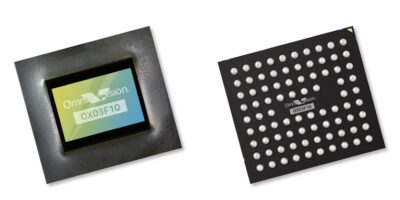Renesas has announced the expansion of its RZ/G2 general-purpose 64-bit microprocessors, with improved artificial intelligence (AI) processing.
The company has added three entry level microprocessor models built around the Arm Cortex-A55 core. The RZ/G2L, RZ/G2LC, and RZ/G2UL join the mid- to high-end RZ/G2E, RZ/G2N, RZ/G2M, and RZ/G2H microprocessors. Renesas adds that the seven RZ/G2 microprocessors provide scalability from entry-level to high-end design.
The RZ/G2Lx microprocessors’ Arm Cortex-A55 CPU core delivers approximately 20 per cent improved processing performance compared with the previous Cortex-A53 core. It also provides approximately six times faster essential processing for AI applications, says the company.
The latest microprocessors integrate camera input interfaces, a 3D graphics engine, and a video codec, for human machine interface (HMI) applications, such as multimedia processing, graphical user interface (GUI) rendering and AI image processing. The microprocessors also feature the Cortex-M33 core, to perform real-time processing for tasks such as sensor data collection without the need for external microcontrollers.
Hiroto Nitta, senior vice president and head of SoC Business, IoT and Infrastructure business unit at Renesas, explained that, with the entry-level products, Renesas is accelerating adoption of the Linux OS on high-performance microprocessors, for innovation to improve performance and enhance functionality in HMI devices, while driving down the overall cost.
“With AI transforming our daily lives, greater on-device compute capabilities are required to provide real-time insights for billions of IoT endpoints,” said Dipti Vachani, senior vice president and general manager, of Automotive and IoT at Arm. “By incorporating Arm technology in its latest 64-bit microprocessors, Renesas is accelerating the adoption of endpoint AI by enabling higher-performance IoT devices capable of processing more intelligence on the device,” he added.
The new entry-level RZ/G2L microprocessors feature error checking and correction (ECC) protection for both on-chip memory and external DDR memory. There is also a Verified Linux Package (VLP) featuring a Civil Infrastructure Platform (CIP) Linux – an industrial-grade Linux offering guaranteed support and security maintenance for more than 10 years. This makes it possible to reduce future maintenance costs, says Renesas. Additionally, support for security functions means that customers can also confidently adopt the RZ/G2L microprocessors for industrial applications requiring high reliability and extended service life, making it possible to bring products to market quicker.
For cases where more sophisticated AI functionality may be required, Renesas plans to enhance the functions and performance of the RZ/G2L microprocessors with its DRP-AI, AI accelerator.
Samples of the new microprocessors MPUs are shipping today, with mass production scheduled to commence sequentially beginning in August 2021.
An evaluation board can be reserved to get an early start evaluating applications for RZ/G2L microprocessors. Reference designs (circuit diagrams and board layout data) are available now.
Renesas is currently developing power management IC (PMIC) products optimised for the RZ/G2L Group. These are scheduled for release later this year.






